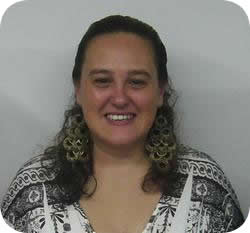In the last years SEO has focused basically in improving the positioning of a site in different search engines (mainly Google), through various strategies and actions with the ultimate goal to rank each site on top of the search results. Actually, that is what it is about. But what does it really means?
The truth is that this implies that search algorithms have focused on making sites more "SEO friendly", which would make a more functional site to robots than users. However, sometimes we're forgetting something essential: every single site is made for humans. At this point is when you have moved beyond SEO to SXO, and that's why Google has been given the task of improving search algorithms and user experience to show the most relevant content possible an effort which has had a big impact on search results. The message seems to be: do not try to be natural, be natural.
Nowadays, some of the directives we have been hearing for years about creating great content and a quality site to win at SEO are truer than ever. As UX expert Jakob Nielsen said in his guide to usability -Designing Web Usability-, “the web is the ultimate environment for empowerment, and he or she who clicks the mouse decides everything”. So, we need to move fast.
First, we must understand the path of a user on the page, to do A/B testing, to apply a responsive design (something mandatory for any web today), to do beta testers, and finally to create quality content… Basically we need to optimize our site to make it more usable and accessible and offer a better user experience to our customer, because If he can not find what he needs or does not like what he sees, he will simply decide to visit another site.
Knowing what matters our customers
Typically, user experience (UX) optimization focuses on optimizing success metrics, but those metrics are your metrics, not Google’s. With SXO, we need to focus on Google’s customer and thus shed some light about Google measures results on their own site.
Where do we start? Answering questions. Except for navigational searches, almost all searches are questions, even when they are not phrased as such. Very simply, Google wants to provide answers, but how does Google know if it has done so successfully? Obviously, they has its own internal metrics to measure the quality of its search results. Just like our own sites, Google must have metrics based on what users click on, but the most telling signal to Google may very well be the “next click”. If Google wants to provide the answer to a query, the next user click tells them what it needs to know.
Therefore, to optimize the search user experience, you must end the user quest and kill the search. The user must have no reason to go back to Google and continue their quest for an answer. We will never know what that next click is. However, we can influence next click by understanding our users. To “kill the search,” we need to understand why users are landing on our page and what was the need that drove them to Google in the first place. Once achieved this, you must to be highly effective, because you do not have much time. Actually just 10 seconds...
10 second to engage
Jakob Nielsen performed an analysis that revealed that the largest visitor drop-off came in the first 10 seconds. If you get past 10 seconds, then users will give your site a chance. This means you have a maximum of 10 seconds to convince visitors that you have the answer to their question, an answer that they can trust or will make it easier to get their answer.
So, let’s make a deal. Next time you are thinking in SEO, change just one letter and make sure focusing on the search experience to the user, not the engine.

About Andrea Picaso
Andrea is a SEO/ SEM specialist with more than 10 years of experience positioning Websites for local and global Customers
Nowadays Andrea specializes in leading the SEO/ SEM department of TISA, continuously researching about new positioning algorithms to obtain a better performance and rating in a lower time.
Beyond her technical knowledge Andrea enjoys listening Music from the 90's and Painting.













